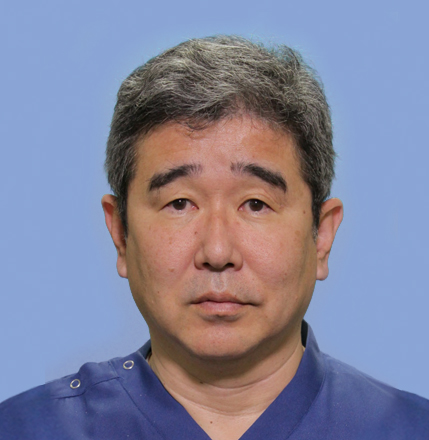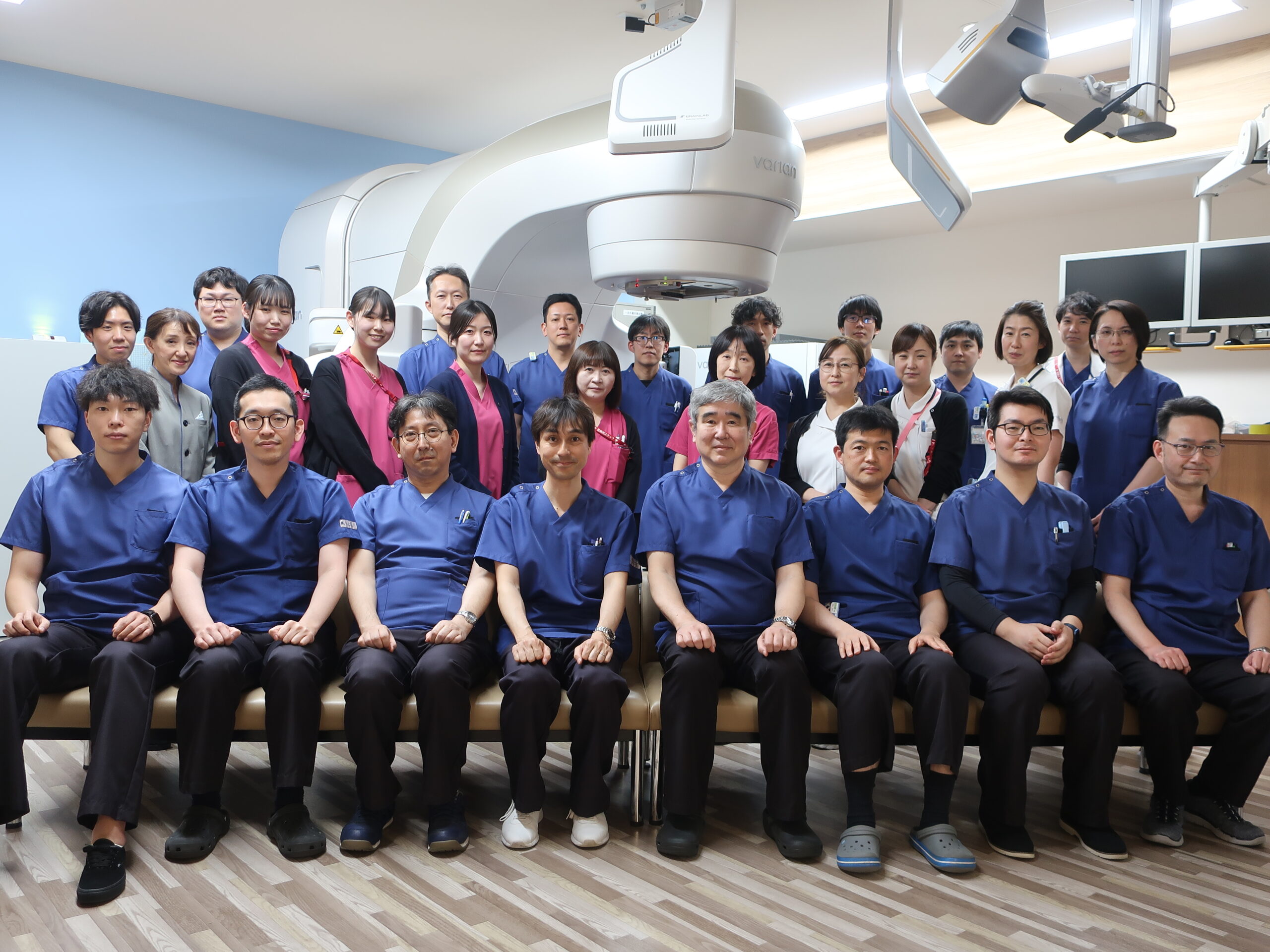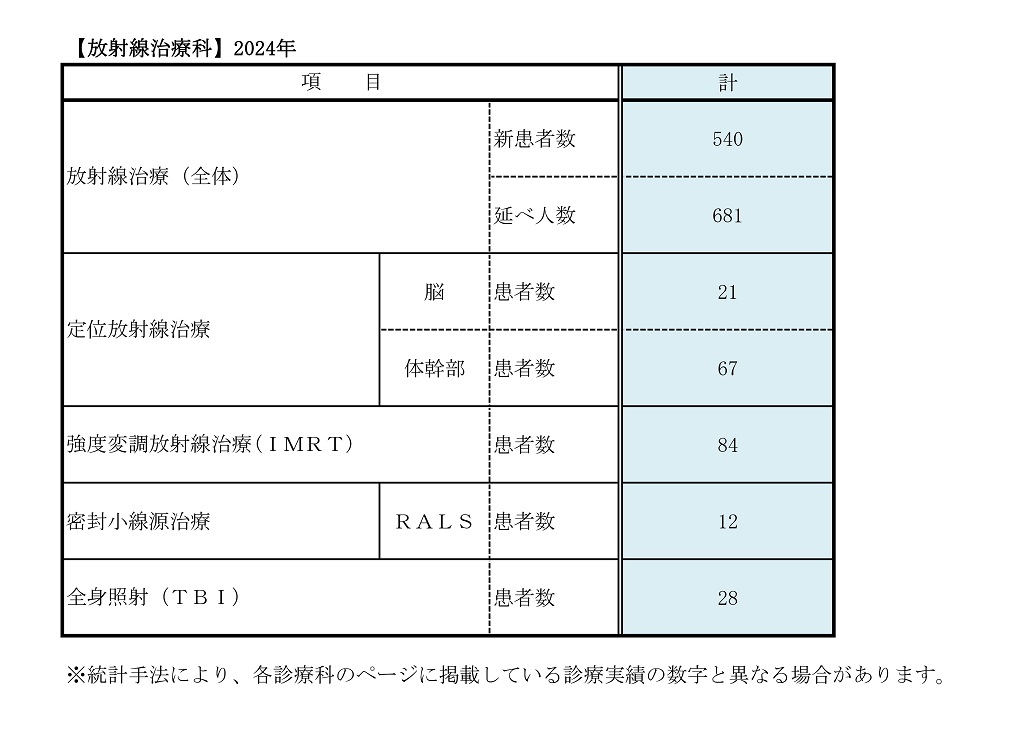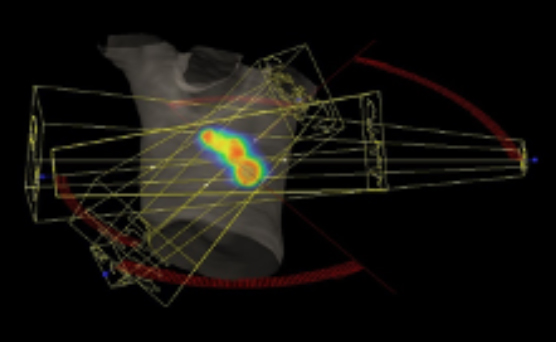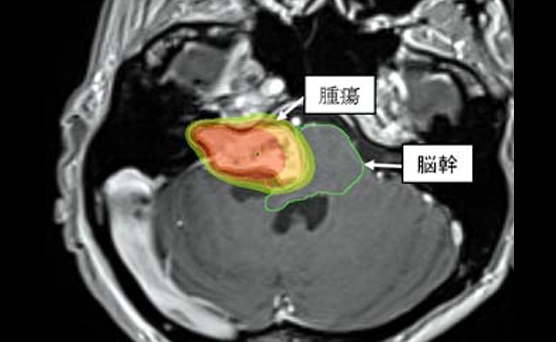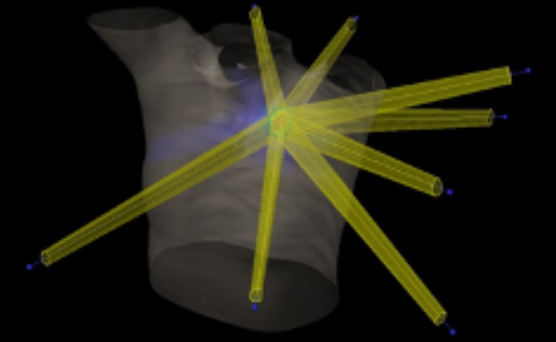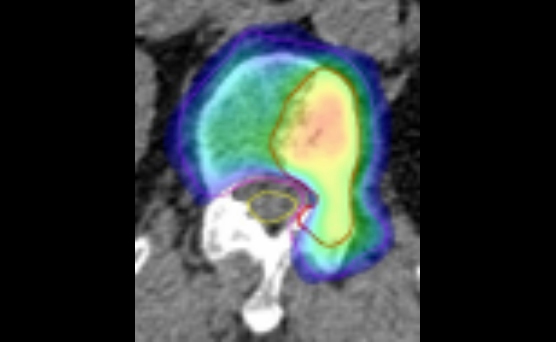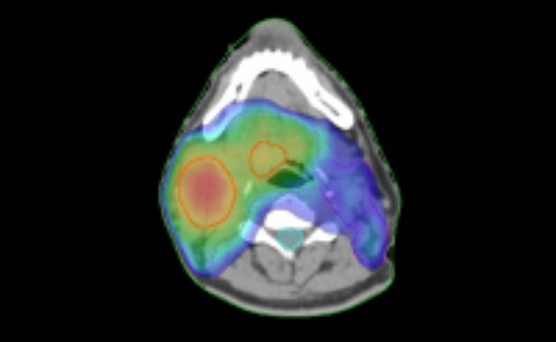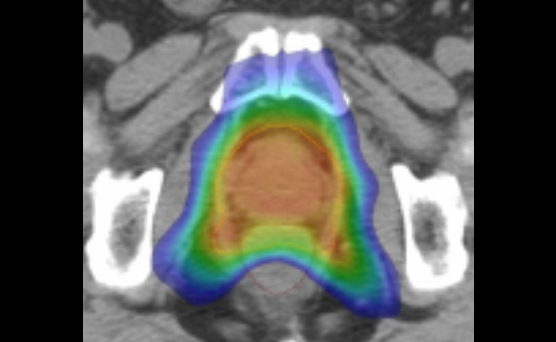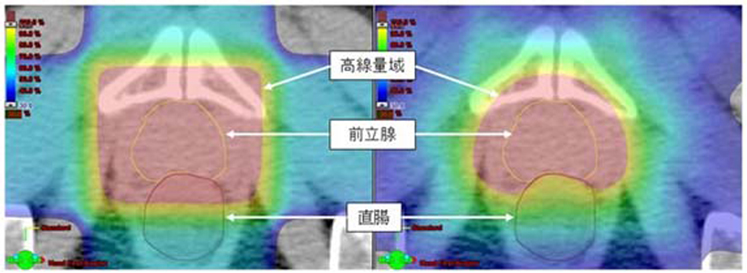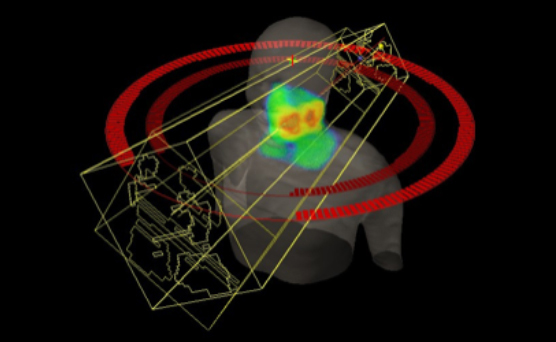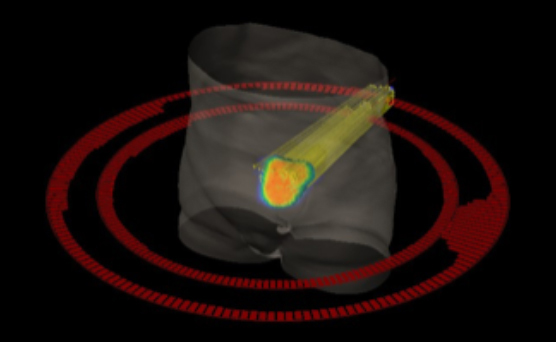がんは1980年以来わが国の死亡原因第一位となり、高齢化社会の到来とあいまってその患者数はますます増加しています。
放射線療法は手術療法、化学療法とともにがん治療の三本柱のひとつです。放射線療法は他と比較し低侵襲の特徴を持っており、以下のような大きな利点を有しています。
- 患部を切除しないで治療するため機能・形態の温存に優れている。
- 手術の困難な部位でも治療が実施可能である。
- 手術や化学療法に比べて体の負担が少なく、合併症を有する患者や高齢者にも適応できる。
放射線治療は、抗癌剤と組み合わせることによって切らずに根治治療が可能となりますし、手術と組み合わせることによって切除範囲の縮小や再発防止に大きな役割を果たします。骨転移や脳転移などの緩和治療においても生活の質(QOL)の維持に貢献しています。高齢や心不全などで手術ができない方や手術による合併症を望まれない方は放射線治療が非常に良い選択肢となります。近年はIT技術の発展と共に治療機器・治療技術の開発・進歩が飛躍的に進み、侵襲の少ない強度変調放射線治療(IMRT)や定位放射線治療(ピンポイント照射)といった高精度放射線治療が普及しつつあります。
当科では高精度放射線治療装置3台と小線源治療装置1台を駆使し、様々な悪性腫瘍(固形癌、血液腫瘍、肉腫)を対象に、一般の外照射から高精度放射線治療さらには子宮癌に対する腔内照射、去勢抵抗性前立腺癌骨転移に対する内用療法、聴神経鞘腫のような良性腫瘍や脳動静脈奇形(AVM)、甲状腺眼症、ケロイドなどの良性疾患に対する放射線治療まで幅広く行っています。
2008年4月に放射線治療センターを設立し、現在、放射線治療医6人(放射線治療専門医4人)、放射線治療専任技師9人、専従医学物理士1人、看護師3人(がん放射線療法看護認定看護師1人)を含めた多職種チームで治療にあたっています。また、日本放射線腫瘍学会認定施設に認定されており、質の高い医療を提供しています。
診療実績
年間放射線治療件数
年間放射線治療件数は、年間新規患者数は約500人、延べ治療件数は約600件です。
| 2020年 | 2021年 | 2022年 | 2023年 | 2024年 | |
| 新患数 | 535 | 529 | 517 | 507 | 540 |
|---|---|---|---|---|---|
| 治療延べ人数 | 663 | 699 | 659 | 607 | 681 |
原発部位別/特殊・高精度放射線治療別の照射件数
ここ5年間のおもな原発部位別/特殊・高精度放射線治療別の照射件数を示します。特に、高精度放射線治療を積極的に行っています。
原発部位別
| 2020年 | 2021年 | 2022年 | 2023年 | 2024年 | |
| 肺・縦隔 | 102 | 107 | 110 | 106 | 106 |
|---|---|---|---|---|---|
| 乳腺 | 108 | 116 | 103 | 150 | 144 |
| 頭頸部 | 54 | 57 | 55 | 49 | 43 |
| 泌尿器 | 70 | 51 | 51 | 46 | 53 |
| 婦人科 | 39 | 41 | 36 | 30 | 33 |
| 血液 | 40 | 54 | 50 | 46 | 49 |
| 消化器(食道除く) | 28 | 21 | 32 | 11 | 30 |
| 食道 | 16 | 14 | 20 | 14 | 14 |
| 肝・胆・膵 | 27 | 27 | 25 | 19 | 21 |
| 脳 | 5 | 10 | 2 | 7 | 6 |
| その他悪性疾患 | 35 | 19 | 22 | 10 | 26 |
| 良性疾患 | 11 | 10 | 10 | 19 | 14 |
特殊・高精度放射線治療別
| 2020年 | 2021年 | 2022年 | 2023年 | 2024年 | |
| 脳定位放射 | 13 | 24 | 15 | 18 | 21 |
|---|---|---|---|---|---|
| 体幹部定位放射 | 54 | 60 | 59 | 50 | 67 |
| 肺 | 29 | 24 | 39 | 35 | 34 |
| 肝臓 | 11 | 12 | 12 | 11 | 15 |
| 転移性骨腫瘍 | 14 | 24 | 8 | 4 | 15 |
| 強度変調放射線治療 | 112 | 103 | 67 | 75 | 84 |
| 頭頸部 | 35 | 32 | 22 | 18 | 23 |
| 前立腺 | 34 | 23 | 15 | 28 | 17 |
| 腔内照射 | 16 | 17 | 23 | 16 | 12 |
| 全身照射 | 21 | 25 | 22 | 21 | 28 |
| ゾーフィゴ | 3 | 2 | 1 | 0 | 2 |
診療科別統計
主な疾患・治療法
主な疾患とその治療法
ほとんどすべての悪性腫瘍を扱います。放射線治療の適応は、悪性腫瘍の原発臓器の種類・局在・組織型・進行度・大きさ、患者さんの年齢・状態・既往歴・希望などを考慮し決定します。
適応となる疾患:脳腫瘍・頭頸部腫瘍・肺癌・乳癌・食道癌・肝臓癌・膵臓癌・婦人科癌・前立腺癌・皮膚癌・肉腫・骨転移など
照射方法・期間は、放射線治療前の診察時に患者さんと主治医と相談の上決定します。各疾患の照射線量と照射期間は目安であり、患者さんの状態に応じて最適な照射線量と照射期間を決めていきます。治療は、基本的に月曜日から金曜日の週5回実施します。土曜日・日曜日・祝日は休みです。
脳腫瘍

頭頸部腫瘍
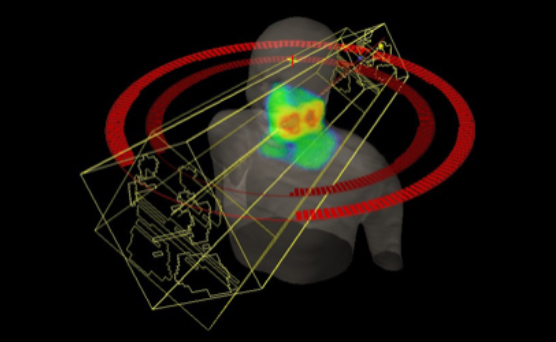
肺癌
早期の肺癌に対しては、患者さんの状態により手術が難しい場合に、体幹部定位放射線治療(SBRT)を根治的治療として行います。早期の肺癌に対するSBRTでは、手術と同等の治療成績も報告されており、治療期間は1~2週間程度です。さらに、局所進行肺癌に対しても、手術が難しい場合には、根治を目指して抗がん剤を併用した化学放射線療法を行います。治療には強度変調放射線治療(IMRT)を使用する場合も多く、照射線量は60Gy、照射期間は6週間程度です。また、進行期においても、症状緩和のために放射線治療を行う場合もあります。肺癌の治療では、治験や臨床試験にも数多く参加しています。
乳癌
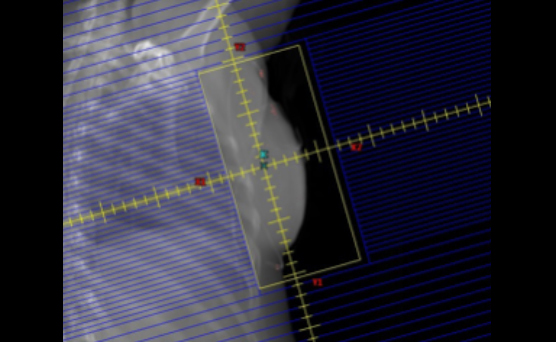
食道癌
食道癌は病期により治療方法が大きく異なります。患者さんの状態に応じて消化器外科、消化器内科、腫瘍内科医師と相談し、最適な治療を選んでいきます。化学放射線療法は、手術と同様に局所を治療する方法ですが、手術と比べて特に臓器の機能や形態を温存できるというメリットがあります。照射線量は50Gy~60Gy、照射期間は5週間~6週間程度です。また、症状緩和の目的で、食物の飲み込みが難しくなる嚥下障害に対して緩和照射を行うこともあります。
肝臓癌
初期の肝臓癌の治療は手術、ラジオ波焼灼療法、肝動脈化学塞栓療法が中心です。患者さんの状態や腫瘍の状態・位置などによって他の治療が難しい場合は体幹部定位放射線治療(SBRT)による治療が行われる場合もあります。照射線量は40Gy、照射期間は1週間程度です。
膵臓癌
膵臓癌に対しては、手術による切除が標準治療ですが、手術による切除をより確実にするために抗がん剤を併用した術前照射を行うことがあります。また、手術が難しい場合には化学放射線療法を行うことがあります。照射線量は40Gy~50Gy、照射期間は4週間~6週間程度です。
婦人科癌
子宮頸癌などの婦人科癌も病期によって大きく治療法が異なります。早期では手術が行われますが、病変がある程度広がってしまっている病期では抗がん剤を併用した化学放射線療法を行います。放射線治療は、骨盤のリンパ節領域を含めた外部照射と子宮と腟を内部から照射する腔内照射を併用して治療を行います。照射線量は40Gy~60Gy、照射期間は4週間~6週間程度です。
前立腺癌
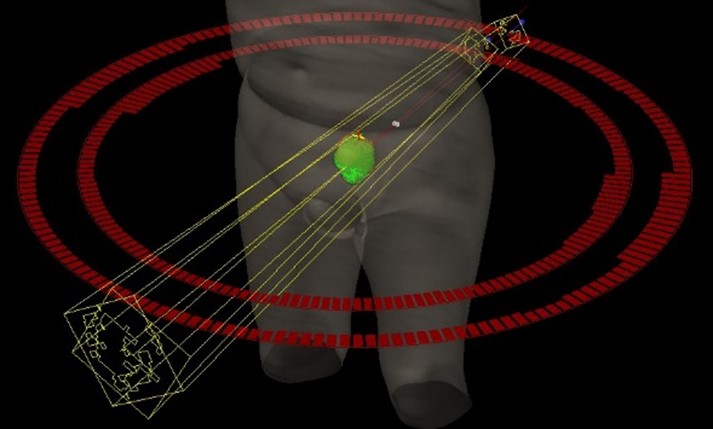
骨転移
骨転移は、がんが血液の流れにのって骨に広がることで発生します。薬剤による治療にも関わらず骨転移が進行し、痛みが出現しはじめた場合には、症状緩和を目的とした放射線治療を行います。放射線治療を受けた7割の患者さんで痛みが軽減します。照射線量は20Gy~30Gy、照射期間は1週間~2週間程度です。患者さんの状態に応じて、1回で行う場合もあります。骨転移が少ない場合には、体幹部定位放射線治療(SBRT)による根治を目指した治療が行われる場合もあります。
緩和照射
癌の進行によるさまざまな症状(疼痛・出血・通過障害・気道閉塞)を和らげることを目的とし、照射を行います。照射により症状が緩和できると判断した場合には、どの部位でも照射は可能です。照射線量は20Gy~50Gy、照射期間は1週間~3週間程度です。
良性腫瘍・良性疾患
髄膜腫や聴神経鞘腫のような良性腫瘍に対しても、手術が難しい場合には、放射線治療を行う場合があります。長期的な腫瘍の増大を止めることができ、有効な治療法のひとつです。また、脳動静脈奇形(AVM)、甲状腺眼症、ケロイドなどの良性疾患に対しても放射線治療を行っています。
その他の治療
その他に、白血病治療等の前処置としての全身照射、イリジウム192を用いた腔内照射、塩化ラジウム223Raを用いた骨転移のある去勢抵抗性前立腺がんの治療も行っています。
高精度放射線治療
当科では、高精度放射線治療を積極的に行っており、頭蓋内の小さな病変に対しては脳定位放射線治療(SRT)、体幹部の小さな病変に対しては体幹部定位放射線治療(SBRT)、正常臓器が近接する腫瘍に対しては強度変調放射線治療(IMRT/VMAT)を行っています。特殊治療としては、骨髄移植を行う前処置として全身照射、婦人科癌に対する腔内照射を行っています。
脳定位放射線治療(SRT)
脳定位放射線治療とは、頭蓋内の小さな病変に多方向から放射線をピンポイントで照射することで、脳の正常部への放射線量を抑えつつ、病変部にたくさんの放射線を照射する治療方法です。治療は病変の種類、大きさ、場所、症状によって1回~数回行います。正確に病変を狙えるように、頭を固定するマスクを装着します。治療時間は1回あたり30~60分です。
対象疾患は、原発性脳腫瘍(悪性、良性)、転移性脳腫瘍、脳動静脈奇形などです。
体幹部定位放射線治療(SBRT)
脳定位放射線治療の技術を体幹部に応用した治療で、胸部や腹部の病巣に対し、高い精度で集中して放射線をあてる治療法です。治療は病変の種類、大きさ、部位によって4回~10回程度で行います。疾患により異なりますが、8割~9割程度の方で局所の制御が望めます。
対象疾患は、原発性、転移性の肺腫瘍または肝腫瘍、転移性脊椎腫瘍及びオリゴ転移(少数転移)です。
強度変調放射線治療(IMRT)
専用コンピューターを用いて空間的・時間的に強度を調節した放射線を用いる治療技術です。たとえ不整・複雑な形の腫瘍であっても、近くの正常臓器への照射を抑え、副作用を増やすことなく照射することが可能となります。正確に病変を狙えるように、頭から肩を固定するマスクや体を固定する専用クッションなどを作成します。極めて高精度な治療のため、治療計画・精度検証には時間が必要で、治療計画用CTを撮影してから治療開始まで2週間程度かかります。IMRTの保険適⽤は限局性の固形悪性腫瘍で、主な対象疾患は、原発性脳腫瘍・頭頸部癌・肺癌・食道癌・膵臓癌・前立腺癌・婦人科癌です。その他の悪性腫瘍でもIMRTのメリットが生かせると判断した場合には積極的に行っています。
前立腺癌に対する固定多門照射(左図)とIMRT(右図)の比較
前立腺癌に対する従来の固定多門照射(左図)とIMRT(右図)の比較です。赤い部分が高い線量の部分です。前立腺(治療したい部位)に対してはどちらの照射法でも十分な線量があたっています。しかし、副作用の起きやすい直腸に対しては、固定多門照射では高い線量の部分が認められますが、IMRTを用いることによって低く抑えることができます。
強度変調回転放射線治療(VMAT)
強度変調回転照射法(VMAT)はIMRTの応用型で放射線治療の装置を回転速度と線量率を変化させながら回転してIMRTを行う照射法です。この方法によって、従来のIMRTと同等もしくはより良好な線量分布を達成しつつ、治療時間の短縮が可能となります。
臨床研究
臨床試験
臨床研究とは、人を対象として行われる医学研究のことです。観察研究や介入研究など様々な臨床研究がありますが、治療や指導などを行ってその結果を評価する介入研究を臨床試験といいます。さらに、臨床試験のうち、新しい薬や医療機器の製造販売の承認を国から得るために行われるのが治験です。
放射線治療科では、「基幹病院としての機能を果たすため、高度・先進医療に取り組む」「医療水準の向上を目指し、職員の研修・教育・研究の充実を図る」といった当院の基本方針に基づき、当院独自であるいは他施設と共同して、様々な臨床研究に取り組んでいます。
特に、当科は本邦最大の臨床試験グループである日本臨床腫瘍研究グループ(Japan Clinical Oncology Group: JCOG)に参加し、様々な臨床試験に協力・貢献してきました。該当する患者さんには、同グループ実施分を始めとして新規臨床試験への参加を積極的に提案しています。臨床試験や治験への参加は患者さん自身の自由意思によるものであり、疑問点については遠慮なくご相談下さい。参加を希望されない場合は、当院で標準とされる治療を行います。
また、既存の診療情報(日常診療で得られる情報)を利用し、経過や診療の効果・影響につき検討する観察研究にも取り組んでいます。研究の趣旨をご理解頂き、ご協力をお願い致します。
実施中の臨床試験
実施中の観察研究
| 疾患 | 研究課題 | 研究組織 | |
|---|---|---|---|
| 頭頸部癌 | 高齢頭頸部がんに対するweekly CDDP同時併用化学放射線治療の有用性を検証する多施設共同後ろ向き観察研究 | 当院(多施設) | |
| 肺癌 | 動体追尾肺定位放射線治療の多施設前向き観察研究 | 京都大学他 | |
| 多施設データに基づく肺がん脳転移の定位放射線治療の臨床実態 | 京都大学他 | ||
| 転移のない 3cm 以下の中枢型非小細胞肺癌に対する高精度少分割放射線治療の多施設共同前向き観察研究(JROSG19-1) | JROSG | ||
| N2a非小細胞肺癌に対する化学放射線療法に関する治療成績の多機関後ろ向き研究 | JROSG | ||
| 乳癌 | 内胸リンパ節領域を標的に含まない領域リンパ節照射を伴う乳癌手術後放射線療法の治療成績の検討 | 京都大学他 | |
| 肝臓癌 | 動体追尾肝定位放射線治療の多施設前向き観察研究 | 京都大学他 | |
| 前立腺癌 | 前立腺がんに対する強度変調放射線治療の多施設前向き登録 | JROSG | |
| 造血器腫瘍 | 肺MALTリンパ腫の初診時および治療前病態、治療選択と予後に関する多機関共同調査研究(PALM-T study) | 三重大学他 | |
| 新世代治療導入後の未治療NK/T細胞リンパ腫における治療実態とその推移および予後に関する国内多機関共同調査研究(NKEA-Next project) | JROSG・三重大学他 |
実施中の治験
当科独自で実施している治験はありません。他の診療科が治験責任医師となっている以下の治験を実施しています。
| 治験 | 治験責任診療科 | 研究課題 |
|---|---|---|
| 企業治験 | 呼吸器内科 | 非切除ステージI/IIリンパ節転移陰性非小細胞肺癌患者の治療として、体幹部定位放射線治療(SBRT)とデュルバルマブを併用する第III相無作為化プラセボ対照二重盲検国際多施設共同試験(PACIFIC-4/RTOG-3515) |
| 医師主導 | 泌尿器科 |
筋層浸潤性膀胱癌患者を対象にMK-3475およびASG-22CEと放射線療法の併用療法の有効性を検討する試験(PEVRAD) |
| 企業治験 | 泌尿器科 | 前立腺特異的膜抗原(PSMA)陽性オリゴ転移性前立腺がん(OMPC)の成人男性患者を対象に,去勢又は再発までの期間延長においてlutetium (177Lu) vipivotide tetraxetan(AAA617)を経過観察と比較する国際共同,前向き,非盲検,多施設共同,ランダム化,第III 相試験(CAAA617D12302)
|
お知らせ
受診の際は「かかりつけ医」からの紹介状をお持ち下さい
当院の外来は原則紹介制をとっておりますので、受診の際は「かかりつけ医」からの紹介状をお持ち下さい。
特に放射線治療科の受診が初めての方は、十分に時間をとって診察したいと思いますので、予め「かかりつけ医」からFAX(078-302-2251)で患者総合支援センターに予約をとっていただくようお願いします。
患者総合支援センターについてはこちらなお、放射線治療以外にも当院での抗がん剤治療や手術を希望される場合は、放射線治療科以外の該当する診療科(例えば肺癌なら呼吸器内科)の予約もお取りください。当科は入院のためのベッドがないため、入院での治療を希望される場合には、該当する診療科での入院となります。診察の上、放射線治療を行うべきかどうかを検討し、必要であれば放射線治療の同意を頂いた上で、放射線治療の内容・日程を決定します。
放射線治療の適応がない、あるいは放射線治療をうけることにより予想される副作用が大きすぎる場合などは、放射線治療をお断りさせていただくことがあります。
また、神戸陽子線センターや神戸低侵襲がん医療センターなど他の医療機関で放射線治療を受けた方が、明らかにメリットがあると判断される場合は、その医療機関を紹介させて頂くことがあります。
当院での放射線科専攻医を目指す人たちへ
当院は、放射線治療科・診断科の専門研修基幹施設として認定されており、放射線科専門医・放射線治療専門医・放射線診断専門医資格取得を念頭においた研修を行っています。また、連携施設の京都大学医学部附属病院とも密接に連携を図りつつ、放射線科全般に及ぶ知識と経験を一定レベル以上に有する放射線科専門医を育成することを目的としています。学会参加や発表も推奨しており、専攻医期間中に学会での口演発表を自分で調べたテーマで行うことを目標にしています。
当院での専門研修に興味のある方は、まずは一度見学にいらしてください。みなさんの見学を心よりお待ちしています。
当科での専門研修を検討されている先生、見学希望の先生は、
E-mail:mkokubo(a)kcho.jp((a)をアットマークに代えて下さい)
までお気軽にお問い合わせ下さい。
